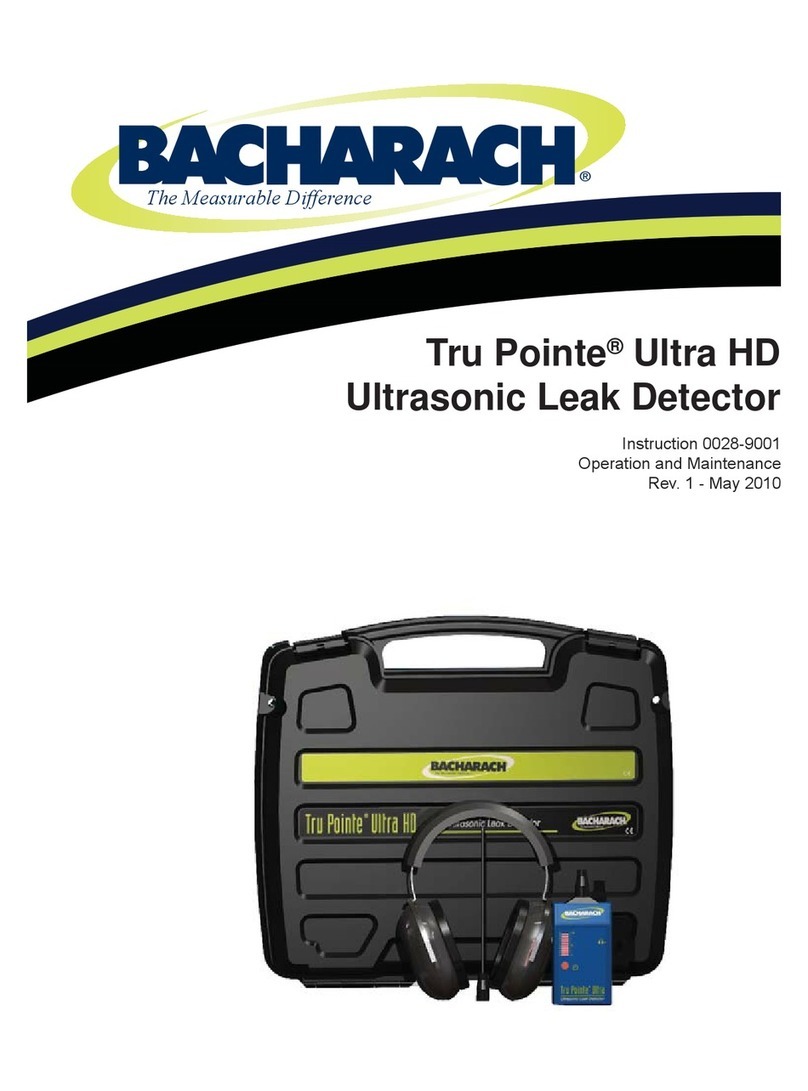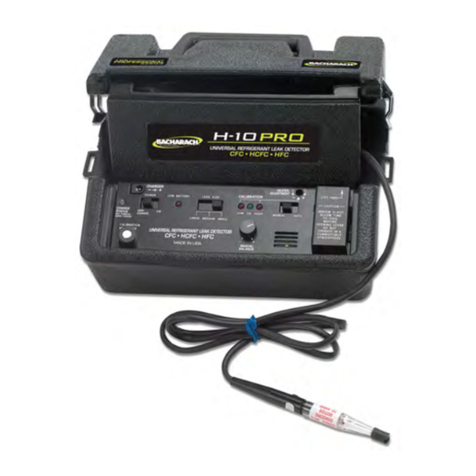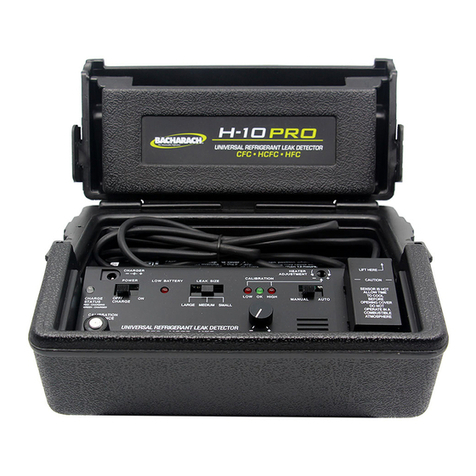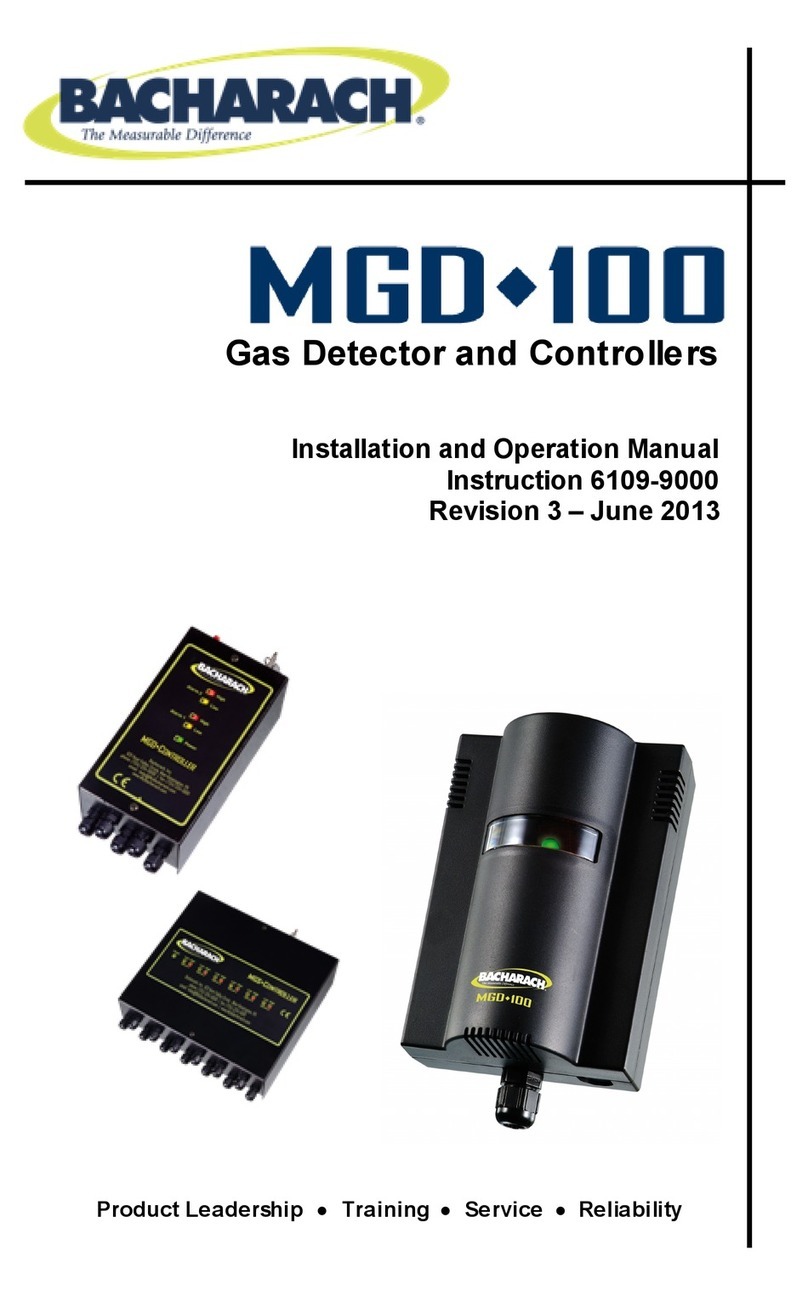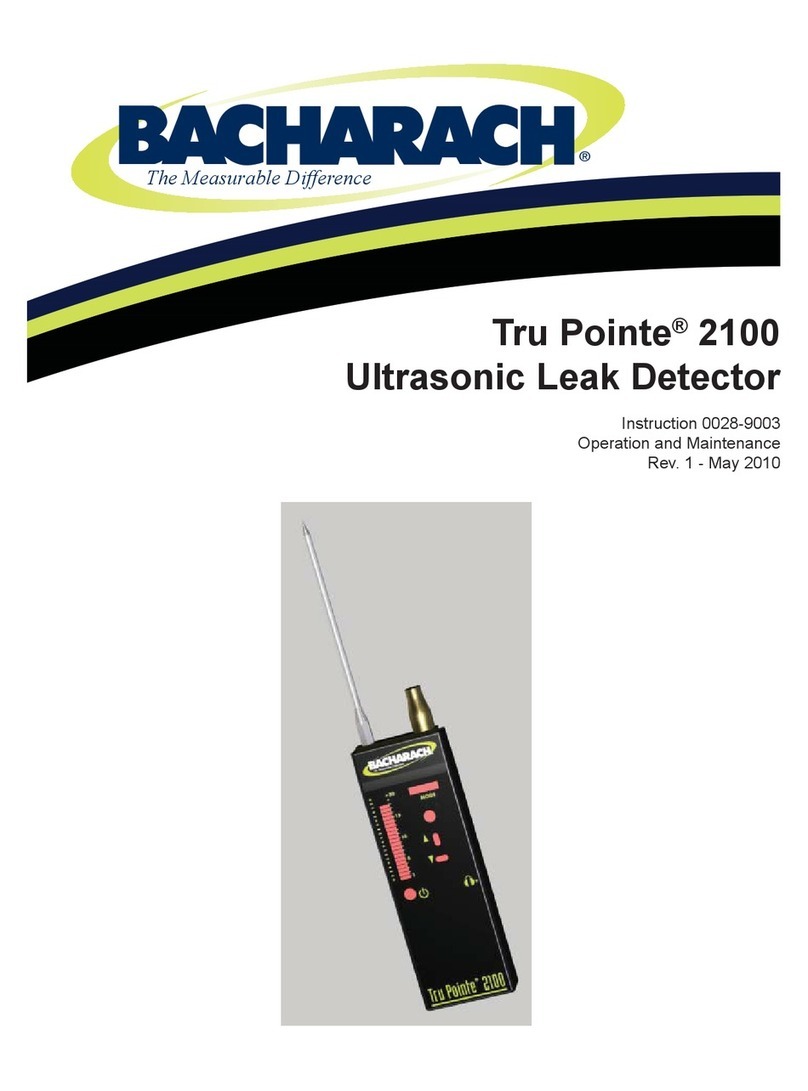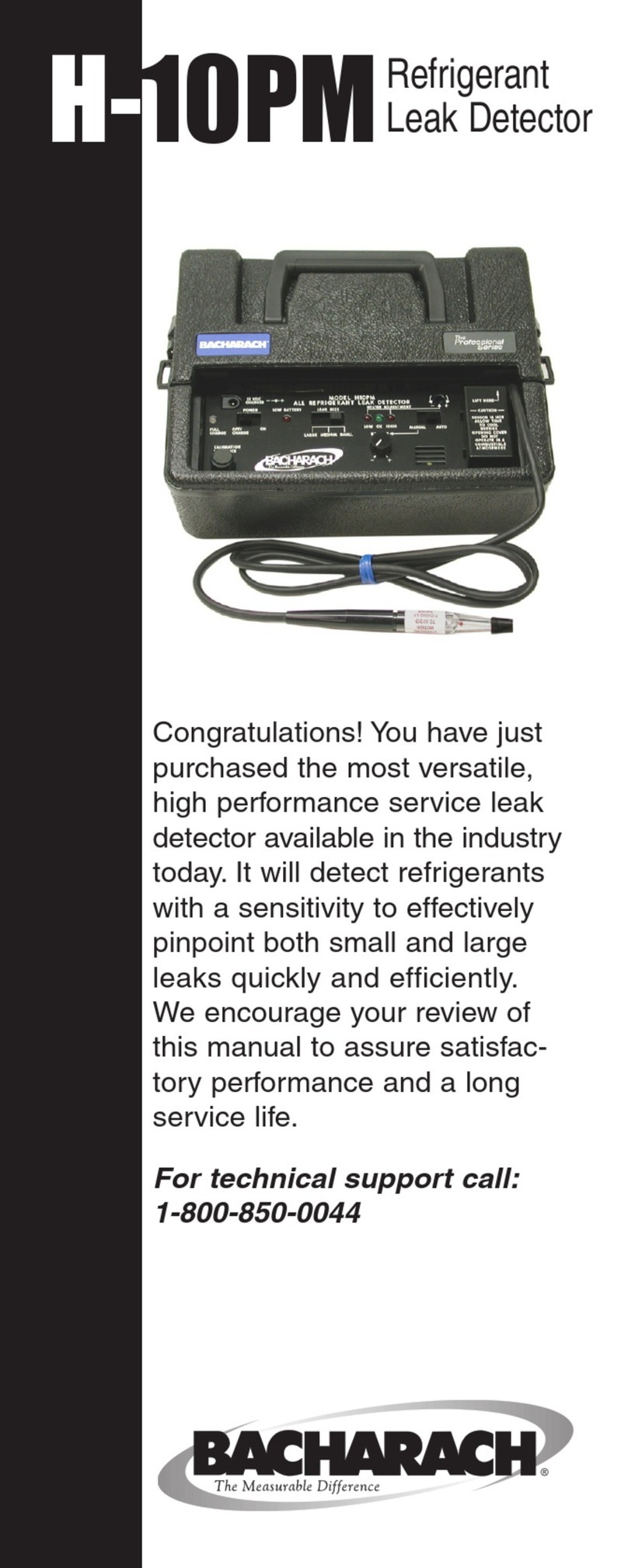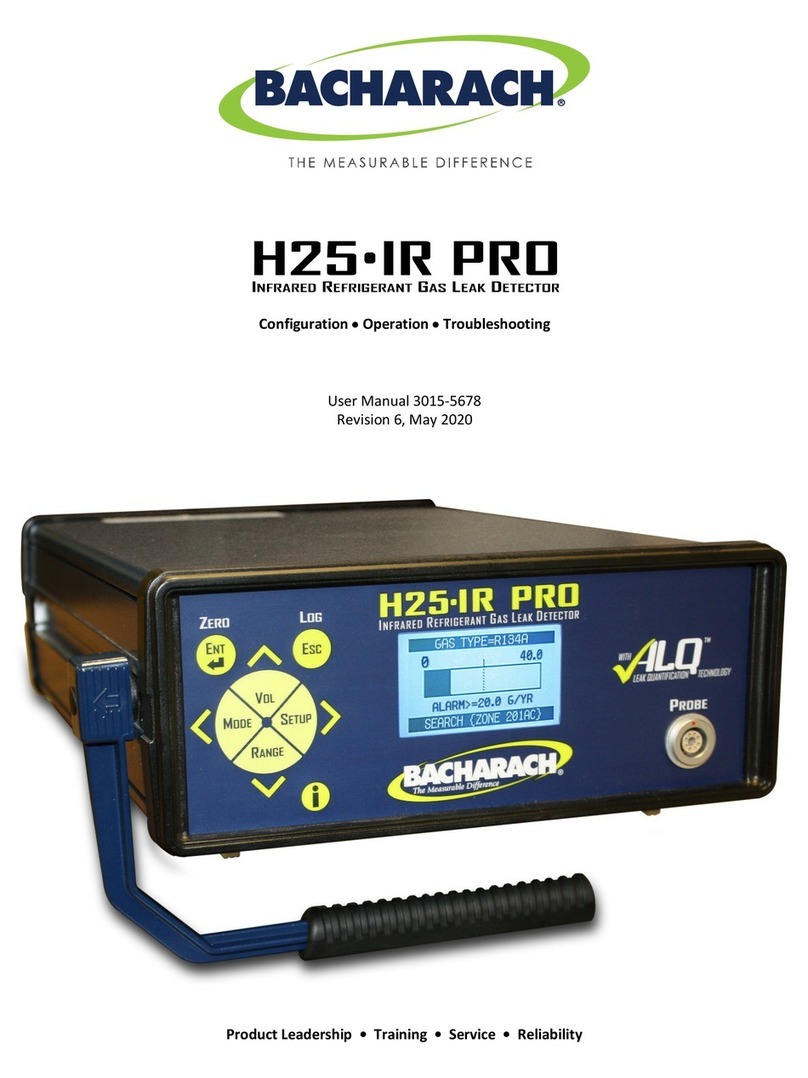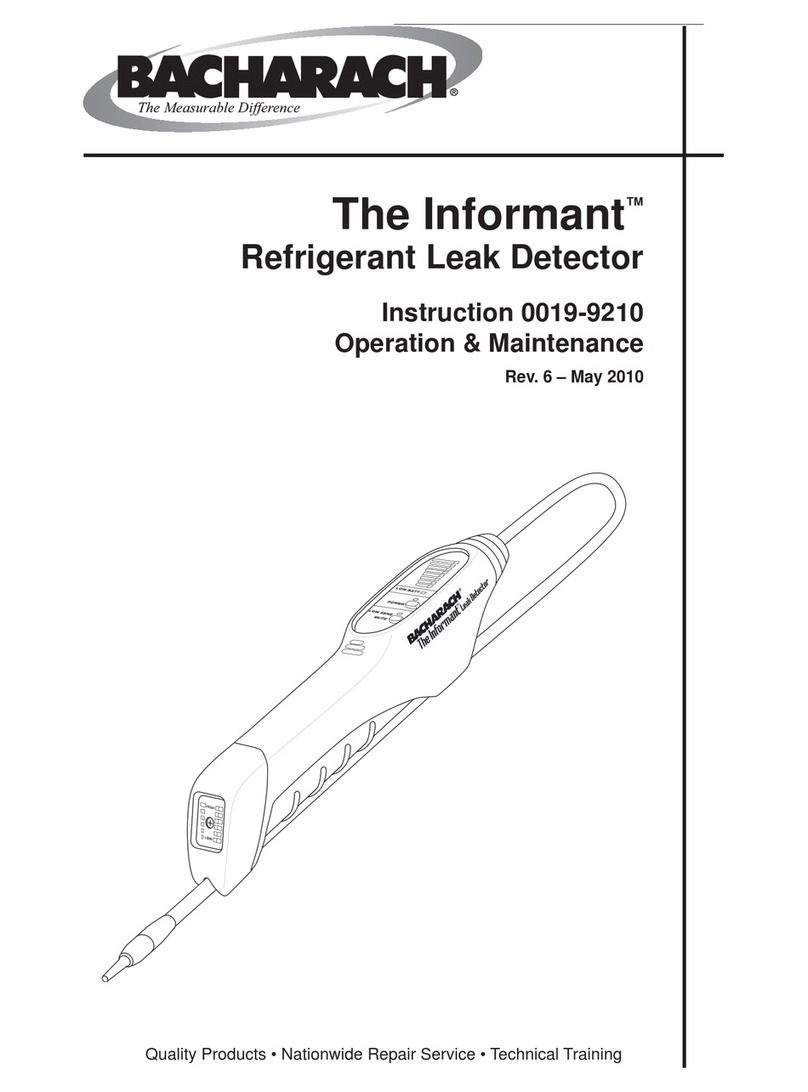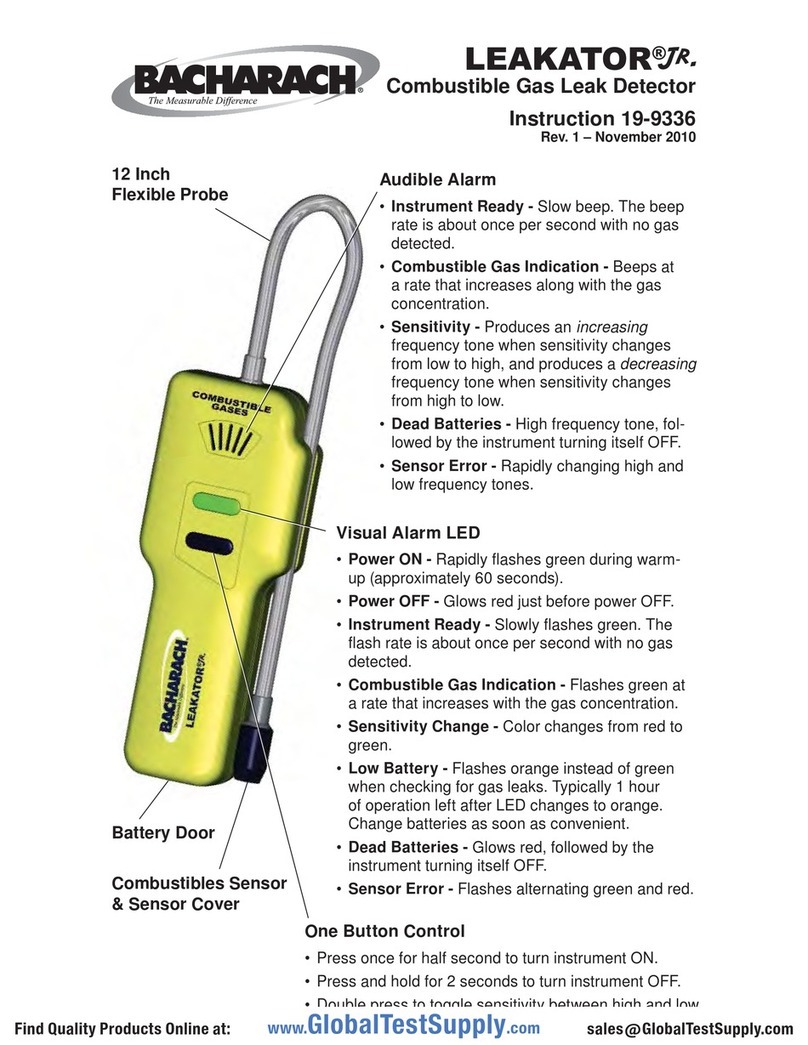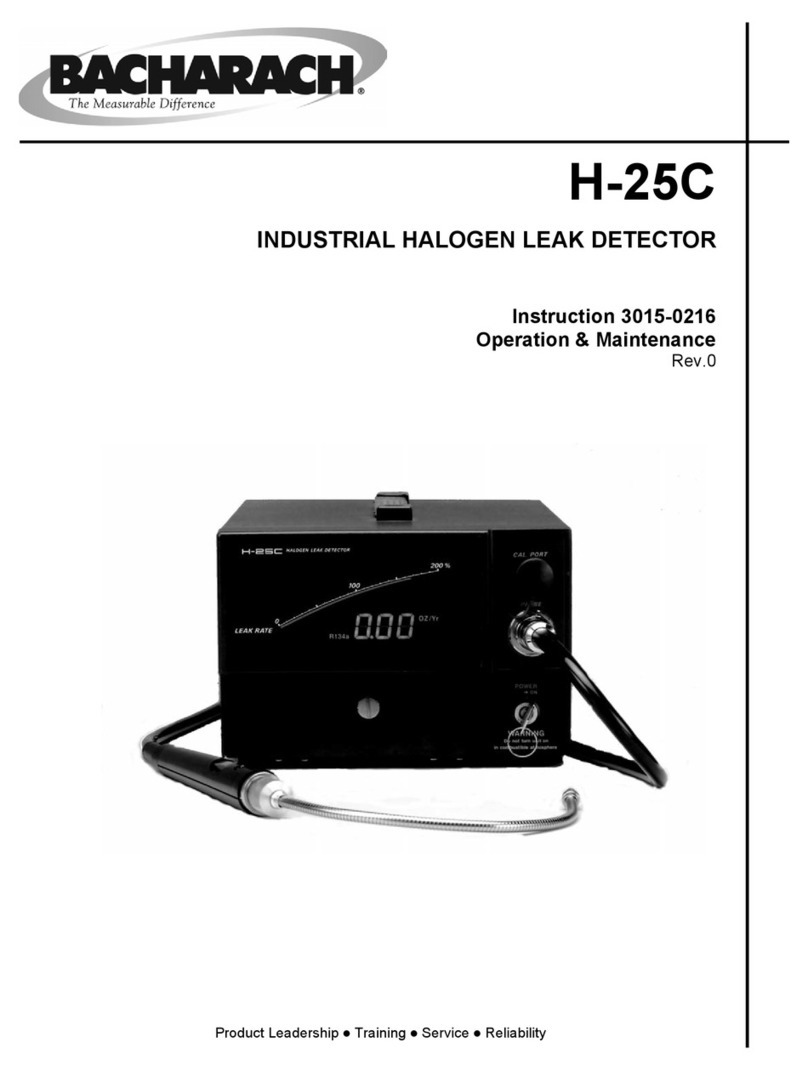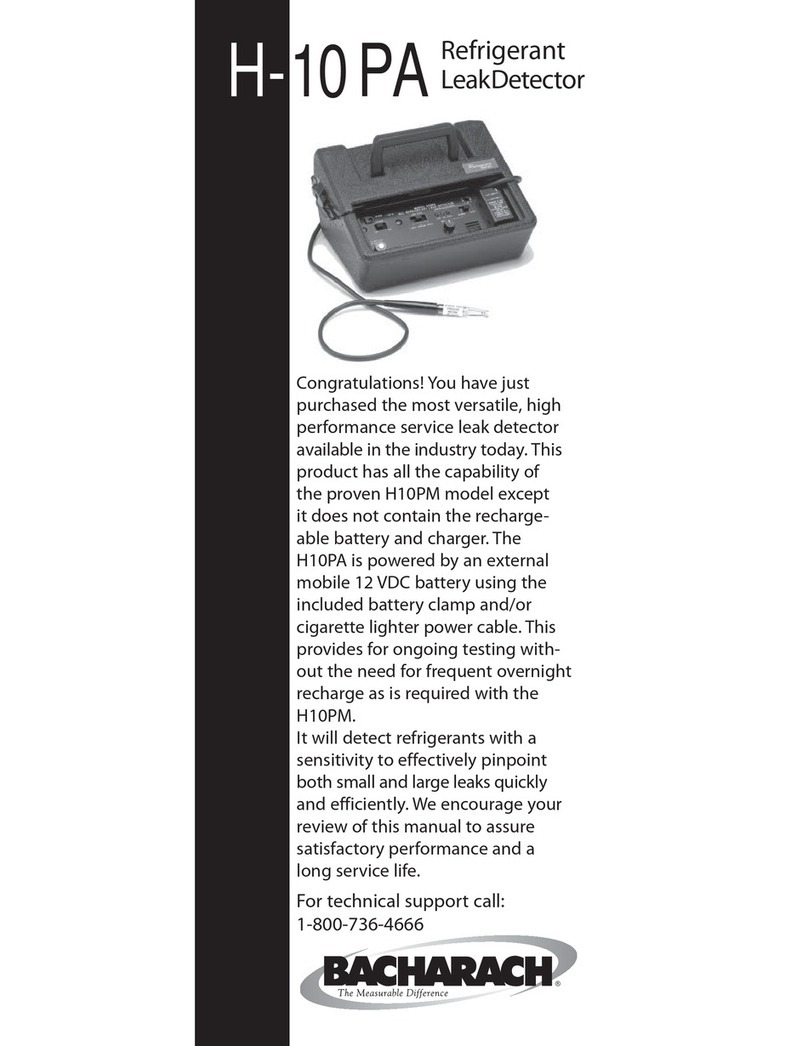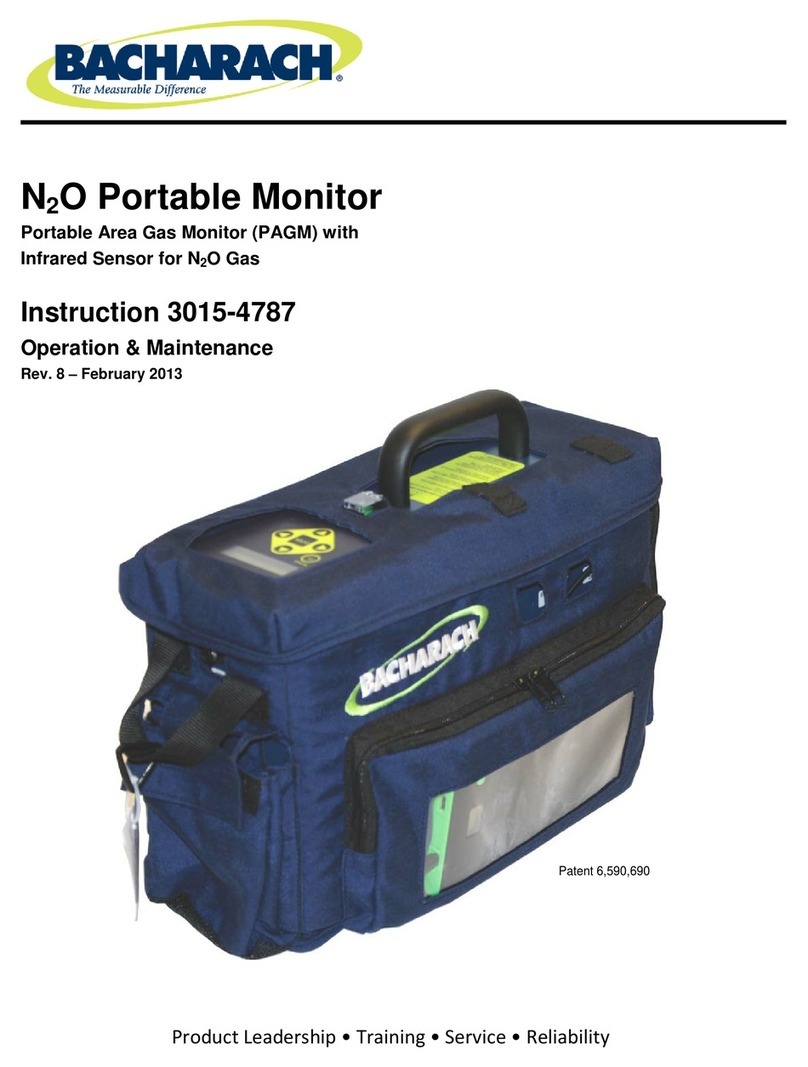MGS-150 Manual
2 6309-9000 Rev 2
WARRANTY POLICY
BACHARACH, INC. WARRANTS THIS INSTRUMENT, EXCLUDING SENSORS, TO BE
FREE FROM DEFECTS IN MATERIALS AND WORKMANSHIP FOR A PERIOD OF TWO
YEARS FROM THE DATE OF PURCHASE BY THE ORIGINAL OWNER. THE SENSORS
HAVE A WARRANTY PERIOD OF ONE YEAR FROM THE DATE OF PURCHASE. IF
THE PRODUCT SHOULD BECOME DEFECTIVE WITHIN THIS WARRANTY PERIOD,
WE WILL REPAIR OR REPLACE IT AT OUR DISCRETION.
THE WARRANTY STATUS MAY BE AFFECTED IF THE INSTRUMENT HAS NOT BEEN
USED AND MAINTAINED PER THE INSTRUCTIONS IN THIS MANUAL OR HAS BEEN
ABUSED, DAMAGED, OR MODIFIED IN ANY WAY. THIS INSTRUMENT IS ONLY TO BE
USED FOR PURPOSES STATED HEREIN. THE MANUFACTURER IS NOT LIABLE FOR
AUXILIARY INTERFACED EQUIPMENT OR CONSEQUENTIAL DAMAGE.
DUE TO ONGOING RESEARCH, DEVELOPMENT, AND PRODUCT TESTING, THE
MANUFACTURER RESERVES THE RIGHT TO CHANGE SPECIFICATIONS WITHOUT
NOTICE. THE INFORMATION CONTAINED HEREIN IS BASED ON DATA CONSIDERED
ACCURATE. HOWEVER, NO WARRANTY IS EXPRESSED OR IMPLIED REGARDING
THE ACCURACY OF THIS DATA.
ALL GOODS MUST BE SHIPPED TO THE MANUFACTURER BY PREPAID FREIGHT.
ALL RETURNED GOODS MUST BE PRE-AUTHORIZED BY OBTAINING A RETURN
MERCHANDISE AUTHORIZATION (RMA) NUMBER. CONTACT THE MANUFACTURER
FOR A NUMBER AND PROCEDURES REQUIRED FOR PRODUCT TRANSPORT.
SERVICE POLICY
BACHARACH, INC. MAINTAINS AN INSTRUMENT SERVICE FACILITY AT THE
FACTORY. SOME BACHARACH DISTRIBUTORS / AGENTS MAY ALSO HAVE
REPAIR FACILITIES, HOWEVER, BACHARACH ASSUMES NO LIABILITY FOR
SERVICE PERFORMED BY ANYONE OTHER THAN BACHARACH PERSONNEL.
REPAIRS ARE WARRANTED FOR 90 DAYS AFTER DATE OF SHIPMENT
(SENSORS, PUMPS, FILTERS AND BATTERIES HAVE INDIVIDUAL
WARRANTIES). SHOULD YOUR INSTRUMENT REQUIRE NON-WARRANTY
REPAIR, YOU MAY CONTACT THE DISTRIBUTOR FROM WHOM IT WAS
PURCHASED OR YOU MAY CONTACT BACHARACH DIRECTLY.
IF BACHARACH IS TO DO THE REPAIR WORK, SEND THE INSTRUMENT,
PREPAID, TO BACHARACH, INC. AT THE FOLLOWING ADDRESS.
BACHARACH, INC.
621 HUNT VALLEY CIRCLE
NEW KENSINGTON, PA 15068
ATTENTION: SERVICE DEPARTMENT
ALWAYS INCLUDE YOUR RMA #, ADDRESS, TELEPHONE NUMBER, CONTACT
NAME, SHIPPING/BILLING INFORMATION AND A DESCRIPTION OF THE
DEFECT AS YOU PERCEIVE IT. YOU WILL BE CONTACTED WITH A COST
ESTIMATE FOR EXPECTED REPAIRS PRIOR TO THE PERFORMANCE OF ANY
SERVICE WORK. FOR LIABILITY REASONS, BACHARACH HAS A POLICY OF
